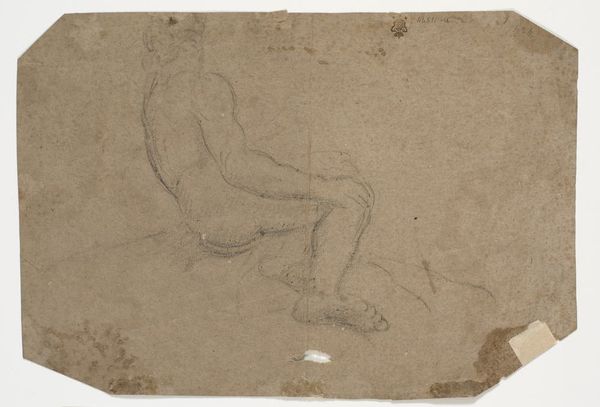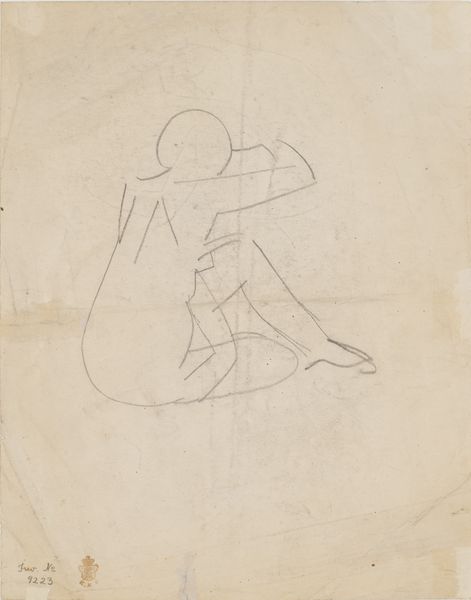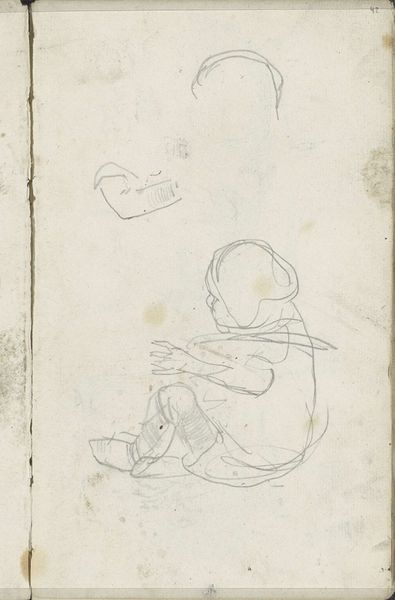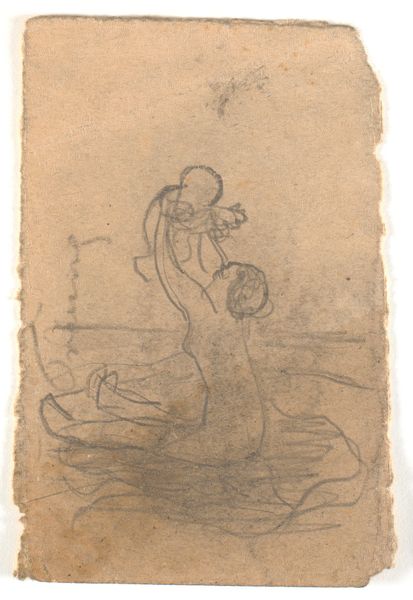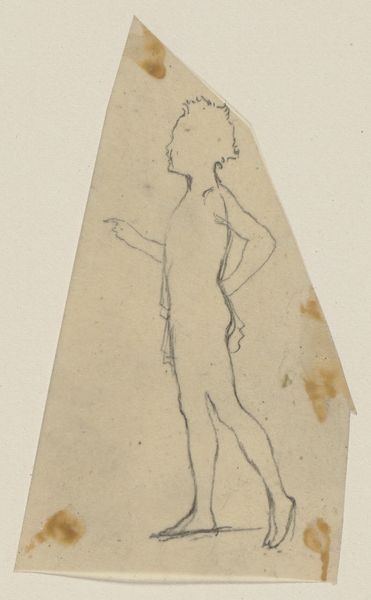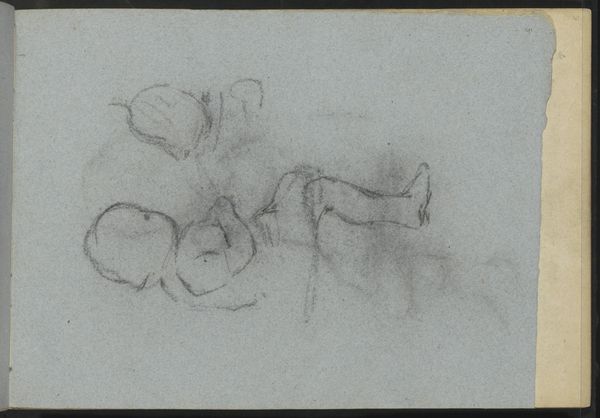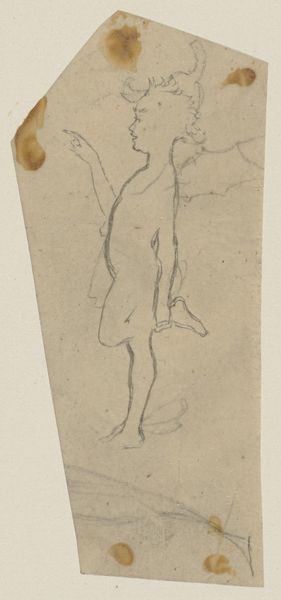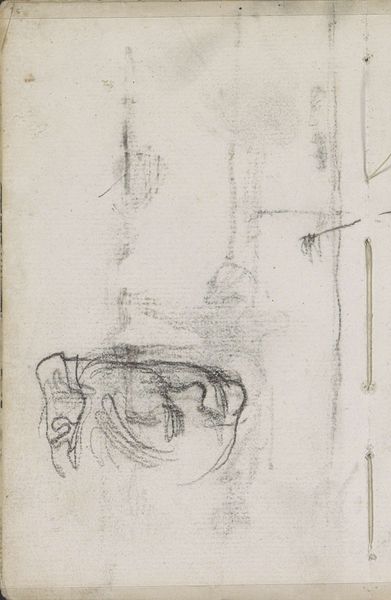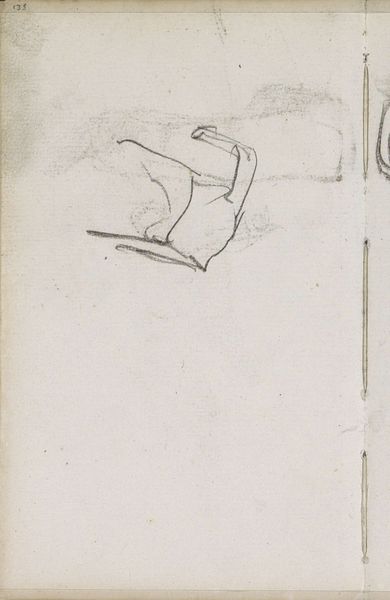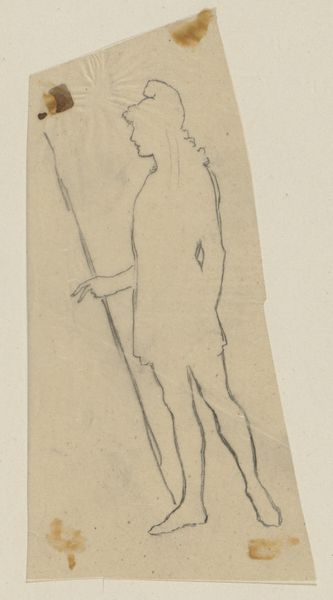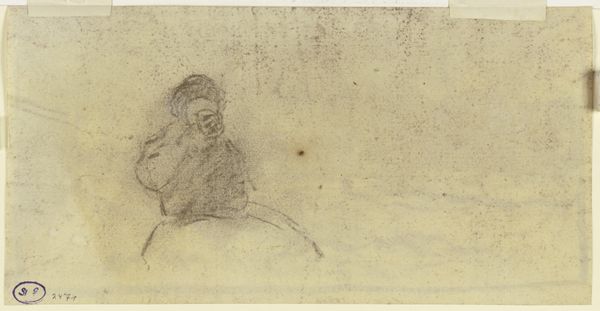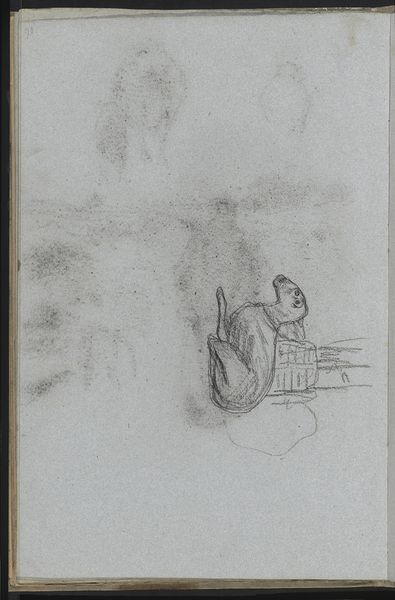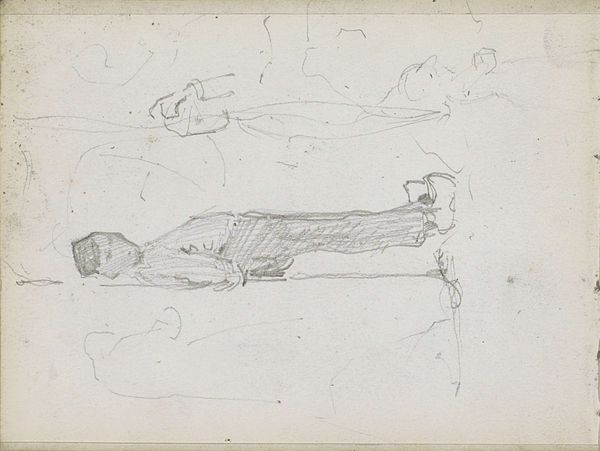
drawing, pencil
#
drawing
#
figuration
#
pencil
#
expressionism
#
nude
Dimensions: 14.5 x 17 cm
Copyright: Public domain
Editor: This is "Nude girl sitting on the floor," a pencil drawing made in 1904 by Paula Modersohn-Becker. It feels so immediate, almost like a fleeting observation. How do you interpret this work within the context of its time? Curator: It's fascinating to consider how Modersohn-Becker challenged the artistic conventions regarding the female nude. At the time, nudes were often romanticized, highly sexualized depictions, usually intended for a male gaze. But Becker's nude feels raw and intensely personal. What impact did her gender have in terms of access to this kind of art? Editor: Right, the model's pose isn't conventionally attractive. I was reading that as a woman, Modersohn-Becker might have felt that she had a better and different perspective. Was that even possible in those years? Curator: Precisely. Her unique position undoubtedly influenced her representation. Her association with the artistic community in Worpswede and her exposure to early Expressionism fueled her iconoclastic work. Now think about who controlled museums at the time? How might that effect what became available to the public to view? Editor: It sounds like Modersohn-Becker's art wasn't created for an institutional validation? Curator: Exactly! She wasn't necessarily creating for the approval of a male-dominated art world, but for personal and artistic expression, a shift in artistic production toward honesty. Did she push for recognition during that time? Editor: She struggled for recognition in her lifetime, which is incredibly frustrating given her talent. Seeing this drawing helps me reflect on who gets to decide what is "beautiful" and how power dynamics affect art history. Curator: It highlights how socio-political power determines whose stories get told and whose aesthetics are valued within cultural institutions. So much to think about!
Comments
No comments
Be the first to comment and join the conversation on the ultimate creative platform.
